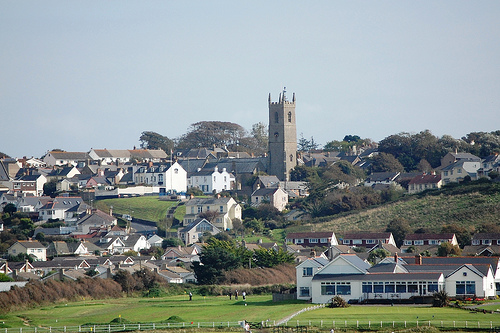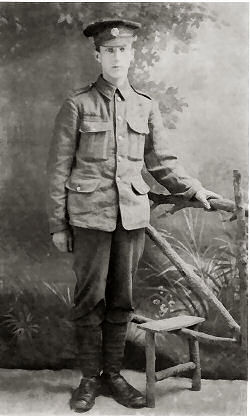Clovelly is now famous as one of the most picturesque villages in England, and receives huge numbers of visitors each summer. However it remained just a small herring fishing port, quite unknown to the outside world, until writers such as Charles Kingsley and Charles Dickens first wrote about it in the mid-nineteenth century. Charles Kingsley, whose father was rector in Clovelly in 1830-36, featured Clovelly extensively in “Westward Ho!” in 1855, as did Charles Dickens in “A Message from the Sea”, first published in 1860. In fact no-one one has ever produced a more evocative description of it than Dickens, though he did not explicitly identify the village in which he set his story as Clovelly, instead calling it Steepways:
“. the village was built sheer up the face of a steep and lofty cliff. There was no road in it, there was no wheeled vehicle in it, there was not a level yard in it. From the sea-beach to the cliff-top two irregular rows of white houses, placed opposite to one another, and twisting here and there, and there and here, rose, like the sides of a long succession of stages of crooked ladders, and you climbed up the village or you climbed down the village by the staves between, some six feet wide or so, and made of sharp irregular stones. The old pack-saddle, long ago laid aside in most parts of England, as one of the appendages of its infancy, flourished here intact. Strings of pack-horses and pack-donkeys toiled slowly up the staves of the ladders, bearing fish, and coal, and such other cargo as was unshipping at the pier from the dancing fleet of village boats, and from two or three little coasting traders. As the beasts of burden ascended laden, or descended light, they got so lost at intervals in the floating clouds of village smoke, that they seemed to dive down some of the village chimneys, and come to the surface again far off, high above the others. No two houses in the village were alike, in chimney, size, shape, door, window, gable, roof-tree, anything. The sides of the ladders were musical with water, running clear and bright. The staves were musical with the clattering feet of the pack-horses and pack-donkeys, and the voices of the fishermen urging them up, mingled with the voices of the fishermen’s wives and their many children. The pier was musical with the wash of the sea, the creaking of capstans and windlasses, and the airy fluttering of little vanes and sails. The rough, sea-bleached boulders of which the pier was made, and the whiter boulders of the shore, were brown with drying nets. The red-brown cliffs, richly wooded to their extremest verge, had their softened and beautiful forms reflected in the bluest water, under the clear North Devon sky of a November day without a cloud. The village itself was so steeped in autumnal foliage, from the houses lying on the pier to the topmost round of the topmost ladder, that one might have fancied it was out a bird’s-nesting, and was (as indeed it was) a wonderful climber.”
No wonder the tourists started descending on Clovelly. Though the herring fleets are long gone the houses, the stepped cobbled street, and the donkeys remain. So, thanks to the care with which the village has been preserved, tourists still flock to it in their thousands. But visit Clovelly out of season, or stay overnight and explore it during a summer evening after they have gone, and you’ll find that it remains a veritable Steepways.
Brian Randell
P.S. Even if you cannot visit Clovelly, you might like to visit my web page at: http://genuki.cs.ncl.ac.uk/DEV/Clovelly/





